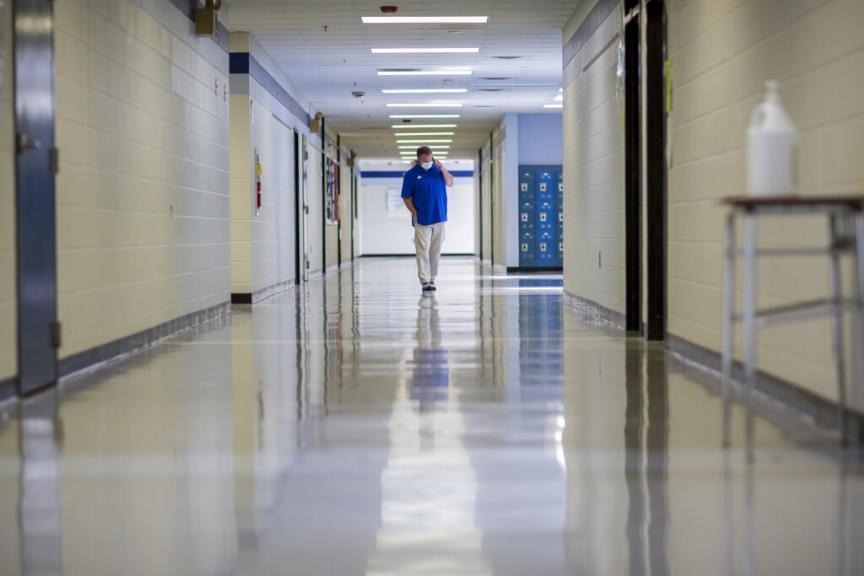Understanding COVID testing and isolation guidelines

A middle school principal walks the empty halls of his school as he speaks with one of his teachers to get an update on her COVID-19 symptoms, Friday, Aug., 20, 2021, in Wrightsville, Ga. On Monday, Dec. 27, 2021, U.S. health officials cut isolation restrictions for Americans who catch the coronavirus from 10 to five days, and also shortened the time that close contacts need to quarantine. AP Photo/Stephen B. Morton, File
With COVID-19 infections and hospitalizations spiking around the country, changing guidance on isolation and testing, and schools restarting for the spring semester, we decided to dive into the best ways to stay safe as the omicron variant spreads.
To help us understand more about best testing practices, omicron transmission, and the Center for Disease Control and Prevention’s latest guidelines, we were joined by two virologists.
GUESTS:
Edward M. Campbell, PhD
Virologist and Professor in the Department of Microbiology and Immunology, Stritch School of Medicine, Loyola University Chicago
Deepak Shukla, PhD
Professor of Virology, UIC College of Medicine
"Every three days, I had my only human contact. The doorbell would ring, I’d open it to an HVAC tube like an enormous vacuum hose held in front of my face while a PPE-clad worker swabbed my nose and throat."https://t.co/Aq33bhgnXj
— ProPublica (@propublica) January 10, 2022
Prepared for web by Owen Henderson
Help shape our coverage on The 21st by joining our texting group and answering weekly questions. To join, text “TALK” to 217-803-0730 or sign up with your phone number below:

